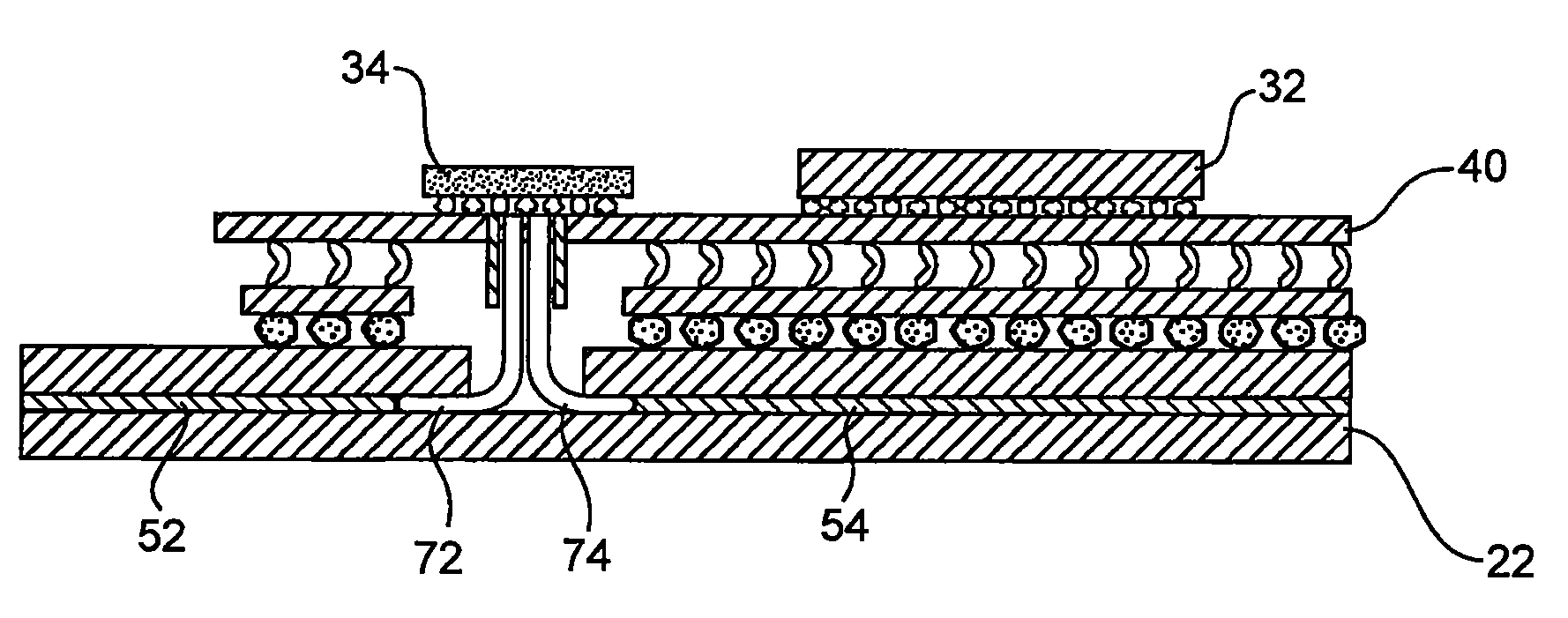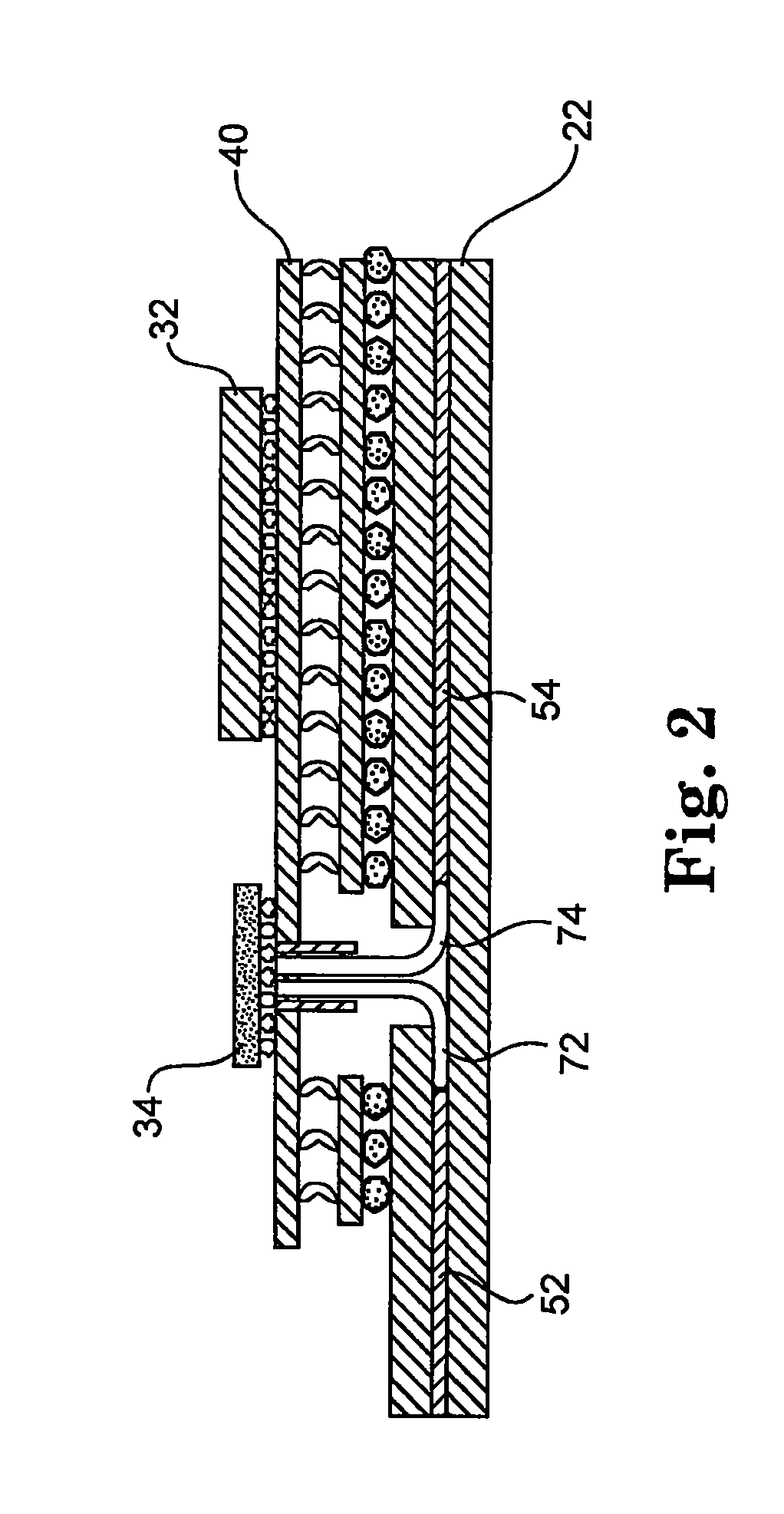Chip carrier package with optical vias
a chip carrier and optical via technology, applied in the direction of optical elements, circuit optical details, instruments, etc., can solve the problems of limited signal strength and crosstalk between signals, limited signal strength, alignment, etc., and achieve the effect of efficient optical communication and easy alignmen
- Summary
- Abstract
- Description
- Claims
- Application Information
AI Technical Summary
Benefits of technology
Problems solved by technology
Method used
Image
Examples
Embodiment Construction
[0013]In an effort to provide significant flexibility during the manufacturing and assembly of optoelectronic systems, the present invention provides a mechanism to more easily interconnect optoelectronic elements to associated waveguides or fibers embedded in printed circuit boards. Generally speaking, the present invention approaches this problem by providing openings in the bottom surface of a chip carrier which are specifically configured to receive fibers for optical coupling.
[0014]Referring now to FIG. 1, one embodiment of this connection methodology is illustrated. Generally speaking, FIG. 1 is a cross-sectional diagram of a circuit assembly 10 which includes a printed circuit board 20 and a multi-chip module 30 attached thereto. Multi-chip module 30 includes a processor chip 32, an optoelectronic chip 34 and a related electrical chip 36 attached to a carrier 40. In this example, additional chips may exist on carrier 40 depending on the particular application. Similarly, the ...
PUM
 Login to View More
Login to View More Abstract
Description
Claims
Application Information
 Login to View More
Login to View More - R&D
- Intellectual Property
- Life Sciences
- Materials
- Tech Scout
- Unparalleled Data Quality
- Higher Quality Content
- 60% Fewer Hallucinations
Browse by: Latest US Patents, China's latest patents, Technical Efficacy Thesaurus, Application Domain, Technology Topic, Popular Technical Reports.
© 2025 PatSnap. All rights reserved.Legal|Privacy policy|Modern Slavery Act Transparency Statement|Sitemap|About US| Contact US: help@patsnap.com



